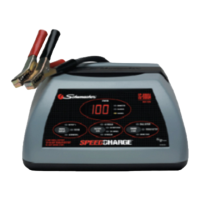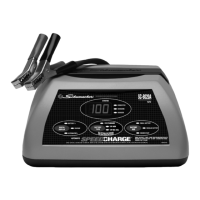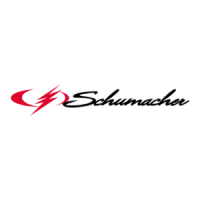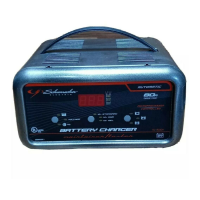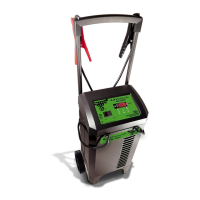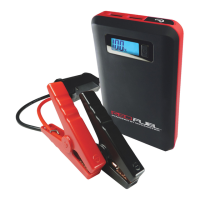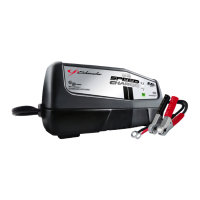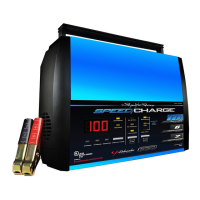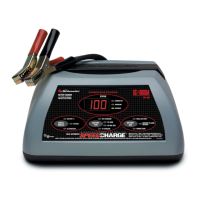
Do you have a question about the Schumacher SpeedCharge SC-10030A and is the answer not in the manual?
| Type | Automatic Battery Charger |
|---|---|
| Input Voltage | 120V AC |
| Output Current | 30A |
| Charging Amperage | Up to 30A |
| Battery Type | Lead Acid |
| Reverse Polarity Protection | Yes |
| Input | 120V AC, 60Hz |
| Output Voltage | 12V DC |
| Battery Types Supported | AGM, Standard, Gel |
| Features | Multi-stage Charging |
| LED Indicators | Charging |
Essential guidelines for safe operation, handling, and electrical precautions when using the charger.
Critical warning about explosive gases generated by lead-acid batteries and associated risks.
Key safety measures to protect yourself when working near batteries and using the charger.
Steps to take before charging, including battery preparation and environment setup.
Recommendations for positioning the charger to ensure safety and proper operation.
Instructions on how to safely connect and disconnect the charger's DC output clips.
Crucial safety steps to prevent sparks and injury when connecting to a vehicle's battery.
How to identify positive/negative posts and determine battery grounding for correct connection.
Detailed steps for connecting the charger's red and black clips to the vehicle's battery and chassis.
Procedure for safely disconnecting the charger after use when the battery is in the vehicle.
Essential safety measures to prevent sparks and explosions when working with batteries outside a vehicle.
Step-by-step guide for connecting the charger to a battery removed from a vehicle.
Instructions for safely disconnecting the charger from an external battery.
Specific note regarding charging marine batteries onboard a vessel.
Guidelines for connecting the charger to a 120V AC outlet and warnings about modifying the plug.
Table detailing recommended AWG wire sizes for extension cords based on length and charger amperage.
Instructions for installing cord cleats and properly storing charging cables.
Step-by-step guide for using the engine start function to jump-start a vehicle.
Details on the charger's modes during the engine start sequence (wait, crank, cool down).
Explanation of how the charger initiates and manages the charging process.
How the charger automatically stops charging and what happens during an aborted charge.
Information on desulfation mode and indicators for charge completion.
Details on the maintain mode and general notes regarding charging operations.
How to use the digital display button to select display modes like battery percentage or voltage.
Explanation of how to select the correct battery type for optimal charging.
How to set the battery size to choose the appropriate charging rate or engine start mode.
A guide to the charger's control panel, including modes of operation and status indicators.
Step-by-step instructions for using the charger as a battery tester.
How to switch between tester mode and charger mode, including time limits.
Explanation of tester status LEDs, initial calculations, and notes for battery testing.
Steps required to use the charger as an alternator tester.
Indicators and their meaning when the charger is operating as an alternator tester.
Understanding the results and limitations of the alternator testing feature.
How the battery's current charge state affects charging time.
How a battery's rating (AH, CCA) influences its charging duration.
Details on the different charge rates (2A, 12A, 30A) and their applications.
Tips for starting a vehicle when the battery is low, including using engine start.
Guidance on charging a battery just enough to start and operate a vehicle.
How to resume charging after an interruption, potentially using a different setting.
Routine cleaning of the charger and proper care for the cords.
Information on when to seek professional service and the charger's low current draw.
A table detailing common problems, their potential causes, and recommended solutions.
Details on the product's limited warranty, coverage, and exclusions.
